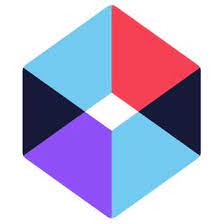Predictive analytics software is a powerful tool for forecasting future outcomes. It uses data mining, statistical algorithms, and machine learning techniques. It helps businesses make informed decisions by analyzing data patterns and generating accurate predictions. In 2023, it’s increasingly important for gaining a competitive edge.
With advanced analytics, organizations optimize operations, enhance customer experiences, and minimize risks. It enables businesses to anticipate market trends, predict consumer behavior, optimize pricing strategies, improve supply chain management, and personalize marketing campaigns. In this article, we’ll discuss predictive analytics software.
Best Predictive Analytics Software
Overall Best: Pecan.ai
Product
Visualization and reporting
Integration with other business systems
Real-time analytics
- Data importation
- Campaign optimization
- Marketing mix modeling
15+ Integrations
- Customer churn prediction
- Upsell and cross-sell
- Demand forecasting
Pecan.ai is an advanced AI-powered predictive analytics software that assists business intelligence, operations, and revenue teams in making informed decisions. Its platform enables organizations to create predictive models that forecast key trends, empowering proactive measures.
Pecan’s unique feature is its continuous training and optimization of models, dynamically prioritizing changing features. This adaptability is presented through a live monitoring dashboard, providing real-time insights into evolving predictive models.
With Pecan, businesses can quickly obtain accurate predictions, leveraging automated machine learning (AutoML) for transformative results.
Pecan.ai is a user-friendly predictive analytics platform that simplifies building and deploying machine learning models, although users need to have knowledge of SQL in order to use the platform. However, you don’t have to worry if you don’t have SQL knowledge as our end-to-end service helps business owners leverage the power of predictive analytics without the need for SQL expertise.
One standout feature of Pecan.ai is its ability to assist self-builders in the data preparation process, eliminating the need for data scientists. This distinguishing feature ensures that data is well-prepared and suitable for integration into machine learning models.
The platform offers customizable pre-built use cases for industries like marketing, finance, and operations. Pecan.ai seamlessly integrates with various data sources, facilitating easy data import and model development. It provides tools for model deployment, performance monitoring, and supports collaboration among team members for iterative model development.
Visualization and reporting
The visualization and reporting feature of Pecan.ai offers robust functionalities for data importation, campaign optimization, and marketing mix modeling. With this feature, users can seamlessly import and analyze data, enhance the effectiveness of marketing campaigns, and simulate the effects of various marketing strategies. By leveraging these capabilities, businesses can make informed decisions, improve their decision-making processes, and attain their desired outcomes more efficiently.
Integration with other business systems
Pecan.ai seamlessly integrates with over 15 popular business systems, facilitating efficient collaboration and interaction with existing tools and platforms. By integrating with systems like CRM, marketing automation, and data warehouses,
Pecan.ai enables smooth data exchange and access to relevant information for predictive analytics. This integration empowers businesses to leverage their current infrastructure and data sources, optimizing the value and potential of Pecan.ai’s predictive analytics capabilities within their established workflows and systems.
Real-time analytics
Pecan.ai empowers businesses with real-time analytics capabilities, including customer churn prediction, upsell and cross-sell analysis, and demand forecasting. By accurately predicting customer churn, businesses can proactively implement strategies to retain valuable customers.
With upsell and cross-sell analysis, organizations can identify opportunities to offer additional products or services to existing customers, leading to increased revenue and customer satisfaction.
Demand forecasting enables businesses to forecast future demand, optimizing inventory management and ensuring efficient supply chain operations.
These real-time analytics features offered by Pecan.ai enable businesses to make data-driven decisions, enhance customer retention, drive revenue growth, and optimize overall operational efficiency.
Pricing
- Contact Pecan.ai
- Actionable predictions powered by AI
- Provides data enrichment for businesses
- The platform is easy to use and intuitive
- Integrations are not wide enough
- Data processing can be time-consuming
Why we chose it:
Pecan.ai stands out as a powerful predictive analytics software due to its accuracy, speed, actionable insights, and seamless integrations.
Best Predictive Analytics Software for Small Businesses
Quick View
- Alteryx: Best overall predictive analytics software for small businesses
- DataRobot: Best for the integration it offers
- Dataiku: Best for its real-time analytics feature
Visualization and reporting
- Variety of charts
- Interactive dashboards
- Report
- Interactive charts
- Graphs
- Dashboards
- Visualization charts
- Line charts
- Data types
- Scatter plots
Integration with other business systems
- Business systems
- Data sources
- Databases
- Third-party applications
- Data warehouses
- BI tools
- Cloud platforms
- Processing framework
- Databases
- Data warehouses
- Cloud platforms
Real-time analytics
- Analyze streaming data
- Uncover trends and patterns
- Process and analyze streaming data
- Analyze streaming data
- Identify patterns
Quick Verdict
Alteryx: Best Overall Predictive Analytics Software for Small Businesses
Alteryx is a powerful and versatile data analytics platform that simplifies predictive analytics with its user-friendly interface and extensive library of pre-built tools and models.
It enables users to prepare, blend, and analyze data from various sources, empowering data analysts, scientists, and business users to make data-driven decisions and uncover valuable insights.
With robust visualization and reporting capabilities, including integration with popular tools like Tableau and Power BI, users can effectively communicate their findings through interactive dashboards, charts, and reports.
Alteryx’s seamless integration with various business systems and data sources, along with its flexible connectors and APIs, ensures smooth data flow across different platforms.
Moreover, its support for real-time analytics, in-memory processing, and integration with real-time data sources enables timely decision-making and the discovery of trends and patterns.
With its intuitive interface, extensive tools, and scalable architecture, Alteryx stands out as a top choice for predictive analytics, integrations, and in-depth reporting.
Top Predictive Analytics Software for Small Businesses
Alteryx is a powerful and versatile data analytics platform that enables users to prepare, blend, and analyze data from various sources. It is designed to simplify the process of predictive analytics by providing a user-friendly interface and a wide range of pre-built tools and models.
Alteryx empowers data analysts, data scientists, and business users to make data-driven decisions and uncover valuable insights.
Visualization and reporting
Alteryx offers robust visualization and reporting capabilities through its integration with popular data visualization tools like Tableau and Power BI. Users can create interactive dashboards, charts, and reports to effectively communicate their findings and insights.
Additionally, Alteryx provides native visualization features, allowing users to explore data and create visualizations directly within the platform.
Integration with other business systems
One of the key strengths of Alteryx is its ability to seamlessly integrate with a wide range of business systems and data sources. This includes databases, spreadsheets, cloud storage, and third-party applications such as Salesforce, Google Analytics, and Adobe Analytics.
Alteryx’s flexible data connectors and APIs make it easy to import and export data, ensuring a smooth flow of information across different systems.
Real-time analytics
Alteryx supports real-time analytics through its in-memory processing capabilities and integration with real-time data sources. Users can access and analyze streaming data, enabling them to make timely decisions and respond to changing business conditions.
Additionally, Alteryx’s advanced analytics features, such as predictive modeling and machine learning, allow users to uncover trends and patterns in real-time data.
Pricing
- Alteryx designer: $5,195/year
- Alteryx server: custom
- Alteryx promotes: custom
Why we chose it: We chose Alteryx because of its power and versatility in predictive Analytics. Its Integrations are also very helpful and reporting features are in depth.
- Intuitive drag-and-drop interface
- Extensive library of pre-built tools and models
- Scalable and high-performance architecture
- The steeper learning curve for non-technical users
- Higher cost compared to some competitors
DataRobot is an automated machine learning platform that empowers users to build, deploy, and maintain accurate predictive models quickly and efficiently.
It streamlines the entire predictive analytics process, from data preparation to model deployment, making it accessible to users with varying levels of expertise.
Visualization and reporting
DataRobot offers a user-friendly interface with robust visualization and reporting capabilities. Users can easily explore data, evaluate model performance, and generate insights through interactive charts, graphs, and dashboards.
These visualizations help users understand complex patterns and relationships in the data, enabling them to make data-driven decisions with confidence.
Integration with other business systems
DataRobot seamlessly integrates with a wide range of business systems, including data warehouses, BI tools, and cloud platforms.
Its API and SDK support enables users to embed predictive analytics into existing workflows and applications, ensuring that insights are readily available to drive business decisions.
Real-time analytics
DataRobot supports real-time analytics, allowing users to process and analyze streaming data as it is generated. This capability enables organizations to respond to changing conditions and make proactive decisions based on up-to-the-minute insights.
Pricing
- Contact Data Robot
Why we chose it
We chose DataRobot as a top predictive analytics tool in 2023 because of its powerful automation capabilities, extensive integration options, and commitment to delivering accurate, actionable insights for businesses of all sizes.
- Automated machine learning
- Scalability and flexibility
- Strong community and support
- Pricing may be prohibitive for smaller organizations
- The steeper learning curve for non-technical users
Dataiku is a powerful end-to-end data science and machine learning platform that enables users to develop, prototype, and deploy predictive analytics models. It is designed to streamline the entire data pipeline, from data ingestion and preparation to model building, evaluation, and deployment.
Dataiku caters to a wide range of users, including data scientists, analysts, and business users, making it a versatile choice for organizations looking to leverage predictive analytics.
Visualization and reporting
Dataiku offers a robust set of visualization and reporting tools that allow users to create interactive dashboards, charts, and graphs to explore and communicate insights from their data.
The platform supports a wide variety of visualization types, including bar charts, line charts, scatter plots, and more. Users can also customize the appearance of their visualizations and easily share them with stakeholders for effective collaboration and decision-making.
Integration with other business systems
Dataiku provides seamless integration with a wide range of business systems, including databases, data warehouses, and cloud storage platforms. It also supports integration with popular big data processing frameworks like Hadoop and Spark.
Additionally, Dataiku offers APIs and connectors for various third-party tools and services, such as Tableau, Power BI, and Salesforce, enabling users to easily incorporate predictive analytics into their existing workflows and systems.
Real-time analytics
Dataiku supports real-time analytics by allowing users to build and deploy real-time data processing pipelines and machine learning models. This enables organizations to analyze streaming data, identify patterns, and make data-driven decisions in real time.
Dataiku’s real-time analytics capabilities are particularly useful for applications such as fraud detection, customer segmentation, and predictive maintenance.
Pricing
- Contact Dataiku
Why we chose it
We chose Dataiku as a top predictive analytics tool in 2023 because of its comprehensive feature set, ease of use, and ability to cater to a wide range of users, making it an excellent choice for organizations looking to harness the power of predictive analytics to drive business value.
- User-friendly interface
- Scalability and flexibility
- Strong collaboration features
- The steeper learning curve for non-technical users
- Pricing may be prohibitive for smaller organizations
Best Predictive Analytics Software for Mid-sized Businesses
Quick View
- Graphite: Overall best predictive analytics software for midsize businesses
- Voyantis: Best for Its User Friendliness
- Imply Data: Best for its balanced functionality for mid-sized businesses
Visualization and reporting
- Interactive dashboard
- Charts
- Graphs
Customizable dashboards, charts, and graphs
Wide range of chart types, including bar, line, area, pie, scatter plots, treemaps
Integration with other business systems
CRM, ERO, Marketing automation
CRM, ERP, and marketing automation platforms
Data sources, databases, and BI tools
Real-time analytics
Monitor and react to changes immediately
- Data monitoring
- Immediate decision making
Apache druid architecture
Quick Verdict
Graphite: Best Overall
Graphite emerges as the ultimate choice for businesses seeking top-notch predictive analytics software. Armed with advanced machine learning algorithms, it empowers organizations to scrutinize and predict trends, patterns, and behaviors within vast data sets, ensuring valuable insights for informed decision-making.
Through its interactive dashboards, charts, and graphs, Graphite offers an extensive collection of visualization tools that unravel intricate data patterns, while its reporting capabilities enable seamless sharing of customizable reports and automated delivery.
Furthermore, Graphite effortlessly integrates with key business systems like CRM, ERP, and marketing automation platforms, maximizing the potential of existing data and augmenting analytics prowess.
Top Predictive Analytics Software for Mid-sized Businesses
Graphite is a powerful predictive analytics software that helps businesses analyze and forecast trends, patterns, and behaviors using advanced machine learning algorithms. It is designed to handle large-scale data sets and provide actionable insights for decision-making.
Visualization and Reporting
Graphite provides a comprehensive range of visualization tools that empower users to comprehend intricate data patterns effectively. With interactive dashboards, charts, and graphs, users can gain insights into complex data sets.
Additionally, Graphite’s reporting capabilities enable the seamless sharing of these insights with stakeholders. Users can customize reports and choose from automated delivery options for convenient dissemination.
Integration with Other Business Systems
Graphite offers seamless integration with various business systems like CRM, ERP, and marketing automation platforms. This integration allows users to harness their existing data resources and augment their analytics capabilities. By leveraging data from multiple sources, Graphite empowers businesses to derive comprehensive insights and make informed decisions.
Real-Time Analytics
Graphite excels in real-time analytics, empowering businesses to monitor and respond to data changes as they happen. This feature provides a competitive advantage, particularly in fast-paced industries where timely decision-making is critical.
With Graphite’s real-time analytics, businesses can stay agile, adapt quickly to market trends, and optimize their strategies accordingly.
Pricing
- Starts at $199/month
Why we chose it
We chose Graphite for its powerful machine-learning capabilities, extensive visualization options, and seamless integration with other business systems, making it a top choice for businesses seeking advanced predictive analytics solutions.
- Scalable and flexible architecture
- Advanced machine learning capabilities
- Wide range of visualization tools
- The steeper learning curve for beginners
- Higher cost compared to some competitors
Voyantis is a user-friendly predictive analytics software designed to help businesses of all sizes make data-driven decisions. It combines advanced analytics techniques with an intuitive interface, making it accessible to users with varying levels of expertise.
Visualization and Reporting
Voyantis presents a diverse range of visualization options to users, including customizable dashboards, charts, and graphs. These tools facilitate the easy interpretation of data, empowering users to gain valuable insights.
Additionally, Voyantis offers robust reporting capabilities, enabling the creation of detailed reports that can be shared with stakeholders. The reports can also be exported in various formats, ensuring seamless dissemination of information.
Integration with Other Business Systems
Voyantis seamlessly integrates with popular business systems such as CRM, ERP, and marketing automation platforms. This integration allows users to consolidate their data from different sources, resulting in a comprehensive and unified view. By leveraging the power of integration, users can enhance their analytics capabilities and unlock deeper insights.
Real-time Analytics
Voyantis goes beyond traditional analytics by providing real-time data analysis. With this feature, businesses can monitor and respond to changes in their data as they occur, empowering timely decision-making. By accessing up-to-the-minute information, users can stay ahead of trends and make informed choices that drive success.
Pricing
- Contact Voyantis
Why we chose it:
We selected Voyantis for its user-friendly interface, robust integration options, and affordability, making it an excellent choice for businesses looking for a reliable and accessible predictive analytics tool.
- User-friendly interface
- Robust integration options
- Affordable pricing
- Limited advanced analytics features
- May not be suitable for very large data sets
Imply Data is a powerful, real-time analytics platform built on top of Apache Druid, an open-source, high-performance, column-oriented, distributed data store. It is designed to handle large-scale, high-velocity data and provide low-latency, interactive analytics.
Visualization and Reporting
Pivot, an intuitive interface offered by Imply Data, empowers users to effortlessly create visualizations, dashboards, and reports.
With a diverse range of chart types at their disposal—including bar, line, area, pie, and scatter plots, as well as advanced visualizations like heatmaps and treemaps—users can effectively represent their data and gain valuable insights.
Integration with Other Business Systems
Imply Data seamlessly integrates with various business systems by providing native support for popular data sources such as Kafka, AWS Kinesis, and Hadoop. Additionally, Imply Data offers connectors for SQL databases and BI tools, ensuring smooth connectivity and data consolidation.
With RESTful API support, users can effortlessly integrate Imply Data with custom applications and other business systems, enhancing their data analysis capabilities.
Real-time Analytics
Imply Data excels in real-time analytics, thanks to its powerful underlying Apache Druid architecture. Leveraging this architecture, Imply Data can efficiently ingest and query streaming data with minimal latency.
This capability enables users to analyze and visualize their data in real time, empowering them to make timely and data-driven decisions.
Pricing
- Starts at $1,445/month
Why we chose it
Imply Data stands out as a top predictive analytics software due to its real-time analytics capabilities, extensive integration options, and powerful visualization tools.
- Scalable and high-performance architecture
- Intuitive visualization and dashboard creation
- Extensive integration options
- The steeper learning curve for non-technical users
- Limited built-in predictive analytics capabilities
Best Predictive Analytics Software for Large Enterprises
Quick View
- Noogata: Overall best predictive analytics software for large enterprises
- CrossEngage: Best for the level of insight it offers
Visualization and reporting
Bar, line, pie, and scatter charts, heat maps, and geospatial maps.
Time estimates
Information and project tracking
Charts
Integration with other business systems
Data sources, SQL databases
Marketing, CRM systems, Data Warehouses
Real-time analytics
Streaming data monitoring and analysis
- Analyze customer behavior
- Predict future trends
Quick Verdict
Noogata: Best Overall Predictive Analytics Software for Large Enterprises
Noogata is a leading AI-powered predictive analytics platform that empowers businesses to make data-driven decisions effortlessly. With its user-friendly no-code interface, even users without a background in data science can easily build models. Noogata stands out with its pre-built AI models tailored for various industries, ensuring accurate and relevant insights.
The platform offers an array of visualization options, from basic charts to advanced visualizations like heatmaps and geospatial maps, enabling users to create custom dashboards and reports to track key performance indicators.
Additionally, Noogata seamlessly integrates with popular data sources empowering users to make informed decisions on the fly.
Top Predictive Analytics Software for Large Enterprises
Noogata is an AI-powered predictive analytics platform designed to help businesses make data-driven decisions. It offers pre-built, industry-specific AI models and a no-code interface, making it accessible to users without a background in data science.
Visualization and Reporting
Noogata empowers users with a diverse range of visualization options to effectively analyze and communicate data. This includes versatile chart types such as bar, line, pie, and scatter charts, as well as advanced visualizations like heat maps and geospatial maps.
Users can easily create customized dashboards and report to track key performance indicators (KPIs) and share valuable insights with their teams.
Integration with Other Business Systems
Noogata simplifies data integration by providing pre-built connectors for popular data sources, including Salesforce, Google Analytics, and SQL databases. These out-of-the-box integrations ensure seamless data connectivity and enable users to consolidate information from various systems.
Additionally, Noogata supports RESTful APIs, allowing for flexible and customizable integrations with other business systems and applications.
Real-time Analytics
While Noogata’s core focus lies in predictive analytics, it also caters to real-time analytics requirements. Users can actively monitor and analyze streaming data, gaining real-time insights to drive informed decision-making. By leveraging Noogata’s capabilities, users can stay responsive to changing data trends and extract valuable insights at the moment.
Pricing
- Contact Noogata
Why we chose it
Noogata is an excellent choice for predictive analytics software due to its user-friendly, no-code interface, pre-built AI models, and seamless integration with popular data sources.
- No-code interface for easy model building
- Pre-built, industry-specific AI models
- Seamless integration with popular data sources
- Limited customization options for advanced users
- May not be suitable for highly specialized use cases
CrossEngage is a customer data platform (CDP) that combines predictive analytics, AI, and machine learning to help businesses create personalized marketing campaigns and improve customer engagement.
Visualization and Reporting
CrossEngage offers users a user-friendly interface that features customizable dashboards. This interface empowers users to visualize data, monitor campaign performance, and generate insightful reports.
With the flexibility to customize dashboards, users can effectively analyze data and derive valuable insights to drive their marketing strategies.
Integration with Other Business Systems
CrossEngage excels in integrating with various marketing tools, CRM systems, and data warehouses. By seamlessly integrating with existing infrastructure, businesses can leverage their current marketing ecosystem and streamline their data-driven marketing efforts.
This integration ensures a cohesive and unified approach to data management and marketing activities, enhancing efficiency and effectiveness.
Real-time Analytics
CrossEngage supports real-time analytics, empowering businesses to analyze customer behavior, predict future trends, and make data-driven decisions at the moment. With real-time insights, businesses can adapt their marketing strategies, respond to customer needs promptly, and optimize campaign performance in real time.
By harnessing the power of real-time analytics, businesses can stay agile and gain a competitive edge in their industry.
Pricing
- Contact CrossEngage
Why we chose it:
We selected CrossEngage for its AI-driven predictive analytics capabilities, seamless integration with marketing tools, and real-time customer insights, making it an excellent choice for data-driven marketing campaigns.
- AI-driven predictive analytics
- Seamless integration with marketing tools
- Real-time customer insights
- Primarily focused on marketing use cases
- Limited visualization options compared to dedicated BI tools
Key Features to Look for in Predictive Analytics Software
When considering predictive analytics software, there are several crucial features to look for. These features can greatly enhance the effectiveness and usability of the software. Some of the key features to consider include:
Data Preparation and Cleansing
Predictive analytics software should have strong data preparation and cleansing capabilities. Data must be organized, cleaned, and standardized before analysis. The software should offer intuitive tools for integrating data from different sources like databases, spreadsheets, and external APIs.
It should also handle data transformation, filtering, and deduplication. These features ensure accurate, consistent, and reliable data for analysis, resulting in more precise predictions and insights.
Machine Learning and Artificial Intelligence
Machine learning and artificial intelligence (AI) techniques are important in predictive analytics software. These algorithms learn from historical data, identify trends, and make accurate predictions. The software should offer various algorithms like regression, decision trees, neural networks, and ensemble methods. This diversity lets businesses choose the right algorithm. It should also support AI integration, like natural language processing (NLP) and image recognition, to improve predictions and broaden analysis possibilities.
Visualization and Reporting
Good visualization and reporting are vital for presenting complex analytics results. The software should have user-friendly visualization tools for interactive dashboards, charts, graphs, and maps. These visualizations should enable easy data exploration to identify trends, outliers, and correlations.
Additionally, the software should offer customizable reporting for visually appealing reports. These reports should be easily shareable with stakeholders, supporting effective communication and data-driven decision-making.
Automated Model Building and Deployment
Top-notch predictive analytics software simplifies model building and deployment. It should automate model building, minimizing manual coding and data science skills required. The software should have a user-friendly interface, guiding users through data selection, feature engineering, and model evaluation.
It should also automatically select and optimize model parameters for optimal performance. After building models, the software should facilitate seamless deployment in production environments, enabling businesses to implement predictive analytics solutions swiftly and effectively.
Real-time Analytics
Real-time analytics is vital for competitiveness in the fast-paced business landscape of 202 The software should process and analyze streaming data instantly, enabling businesses to seize time-sensitive insights.
With real-time analytics, businesses can swiftly respond to emerging trends, market shifts, and customer behavior, making timely decisions and leveraging opportunities.
By offering real-time insights, the software helps businesses adapt strategies, optimize operations, and enhance customer experiences in a dynamic and rapidly changing environment.
Integration With Other Business Systems
For optimal impact, predictive analytics software should integrate smoothly with other business systems. Integration with CRM or ERP software, for instance, enables seamless data exchange between systems.
This integration allows for a comprehensive view of the business, incorporating predictive analytics into existing workflows.
The software should offer easy integration options like APIs and connectors to facilitate data flow between systems. By leveraging data from various sources, businesses can gain deeper insights, make informed decisions, and improve overall operational efficiency.
How to Choose the Right Predictive Analytics Software for Your Business
Selecting the right predictive analytics software is critical for leveraging data-driven insights. Here are essential steps to help you choose the best software:
Identify Your Business’s Needs and Goals
Before starting the selection process, understand your business’s needs and goals clearly. Identify the challenges you want to tackle with predictive analytics. Specify the insights you require, like demand forecasting, customer segmentation, or fraud detection.
Also, define your implementation goals, such as improving efficiency, increasing revenue, or enhancing customer satisfaction. With well-defined needs and goals, narrow down your options and choose a software solution that aligns with your objectives.
Evaluate the Software’s Features and Capabilities
Once you understand your requirements, evaluate different predictive analytics software options. Look for software with robust data preparation and cleansing capabilities. It should handle data integration, transformation, and quality checks effectively.
Consider the available machine learning algorithms, ensuring they cover techniques suitable for your specific use cases.
The software should offer intuitive visualization and reporting tools for clear, actionable insights. Check if it supports automated model building and deployment, speeding up implementation.
This streamlines the process of creating predictive models and speeds up implementation.
Consider the Software’s Compatibility With Your Existing Tech Stack
Compatibility with your existing technology infrastructure is vital. Evaluate how the predictive analytics software integrates with your data sources, databases, and business systems. It should seamlessly connect with your data repositories and extract relevant information.
Consider compatibility with your preferred programming languages and frameworks, as well as integration with common business applications like CRM or ERP systems. Smooth integration ensures efficient data flow and maximizes the potential of your tech stack.
Read Customer Reviews and Compare Pricing
To understand the software’s real-world performance and user experience, read customer reviews and case studies. Look for feedback on ease of use, performance, scalability, and vendor support. Reviews offer valuable insights to make an informed decision.
Compare pricing plans and licensing models to align with your budget and ROI expectations. Consider the total cost of ownership, including maintenance, upgrades, and support costs.
Consider the Vendor’s Customer Support and Training Resources
Consider the technical expertise and support required for predictive analytics software. Evaluate the level of customer support from the vendor. Consider support availability, response times, and the vendor’s reputation.
Check training resources like documentation, tutorials, and user communities. Comprehensive resources aid learning and maximize software capabilities. Effective customer support and training ensure a smoother implementation and ongoing assistance for predictive analytics initiatives.
Implementing Predictive Analytics Software: Tips for Success
Implementing predictive analytics software successfully requires careful planning and execution. Here are some tips to ensure a successful implementation:
Identify the Right Data Sources
When implementing predictive analytics software, it is crucial to identify the appropriate data sources. Understand the types of data that align with your business objectives. This may include internal data such as customer information, sales data, and operational data.
It may also involve external data sources like market trends, social media data, or demographic data. Consider the quality, availability, and accessibility of these data sources. Ensure that your predictive models are built on accurate and reliable information.
Additionally, think about the scalability of your data sources. They should be able to accommodate future growth and handle increasing data volumes.
Set Clear Goals and Expectations
To achieve a successful implementation, it’s crucial to clearly define your goals and expectations. Ensure your objectives are specific and measurable, aligned with your business needs. For instance, if you aim to enhance customer retention, establish a target percentage increase or a specific number of customers to retain.
By setting clear goals, you create a framework for your predictive analytics initiatives and establish a benchmark for measuring success. Communicate these goals to your team and stakeholders, ensuring everyone comprehends the purpose and anticipated outcomes of the implementation.
Train Your Team on How to Use the Software
Training is vital for effectively using predictive analytics software. Invest in training programs to educate your team on software features. Train them on data preparation, model building, result interpretation, and data visualization.
Customize training for different user roles. This includes data analysts, business users, and decision-makers. Ensure each group understands how to leverage the software for their needs. Hands-on training, workshops, and knowledge-sharing sessions build expertise and confidence among team members.
Provide Ongoing Support and Resources
Continuous support and resources are necessary for implementing predictive analytics software. Establish a support system to address any technical challenges or questions. This may include providing access to technical support from the vendor, creating internal support channels, or assigning analytics experts.
Give access to documentation, user guides, and tutorials to assist team members in using the software. Regularly update and provide additional resources as new features are introduced. Maximize software benefits by doing so.
Continuously Evaluate and Refine Your Predictive Analytics Processes
Implementing predictive analytics is an iterative process. Regularly evaluate and refine your models. Monitor predictions against actual outcomes and predefined metrics. Identify areas for improvement, such as data quality issues or model biases.
Take necessary actions to refine processes. This may involve recalibrating models, exploring new algorithms, or incorporating additional data sources. Continuous evaluation and refinement keep insights relevant, accurate, and impactful.
Frequently Asked Questions
Conclusion
When it comes to selecting the optimal predictive analytics software for your business, it is crucial to give thoughtful attention to important factors. These factors include identifying suitable data sources, establishing well-defined objectives, ensuring sufficient training and ongoing support, and consistently assessing and improving your procedures.
By emphasizing these aspects, you can effectively leverage predictive analytics to uncover valuable insights, make informed choices, and stimulate business expansion in today’s data-centric environment. Exercise careful judgment in your selection and embrace the transformative capabilities of predictive analytics within your organization.























